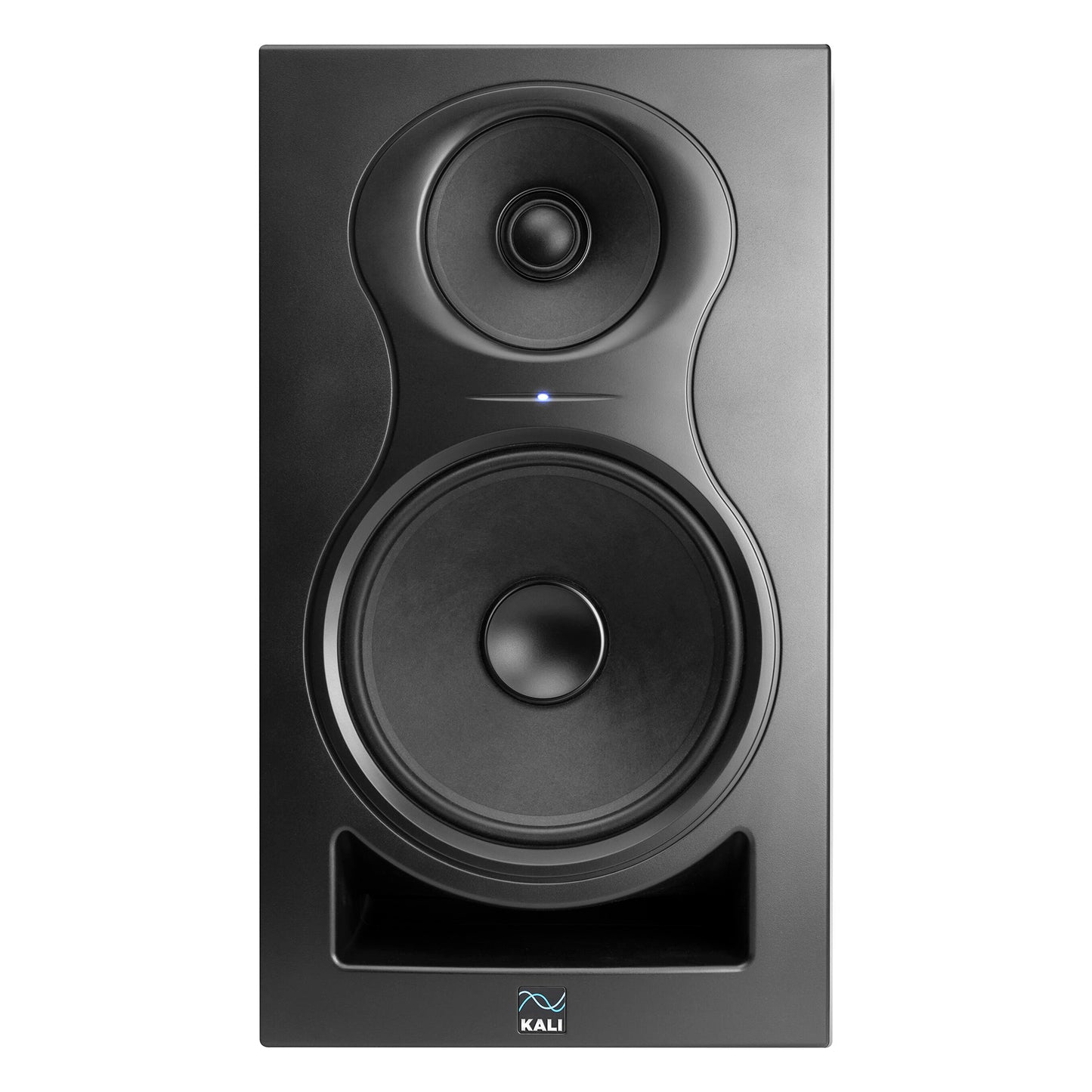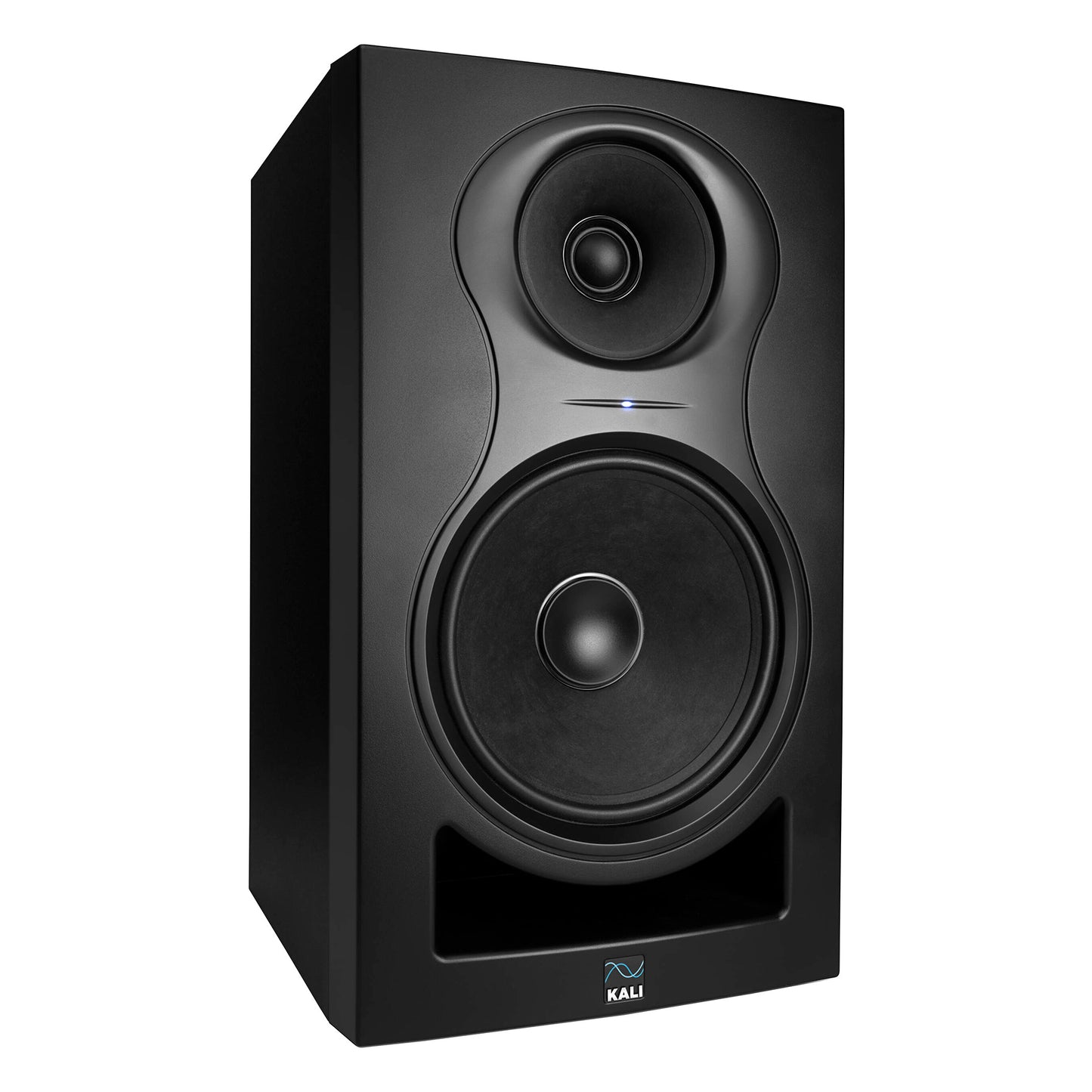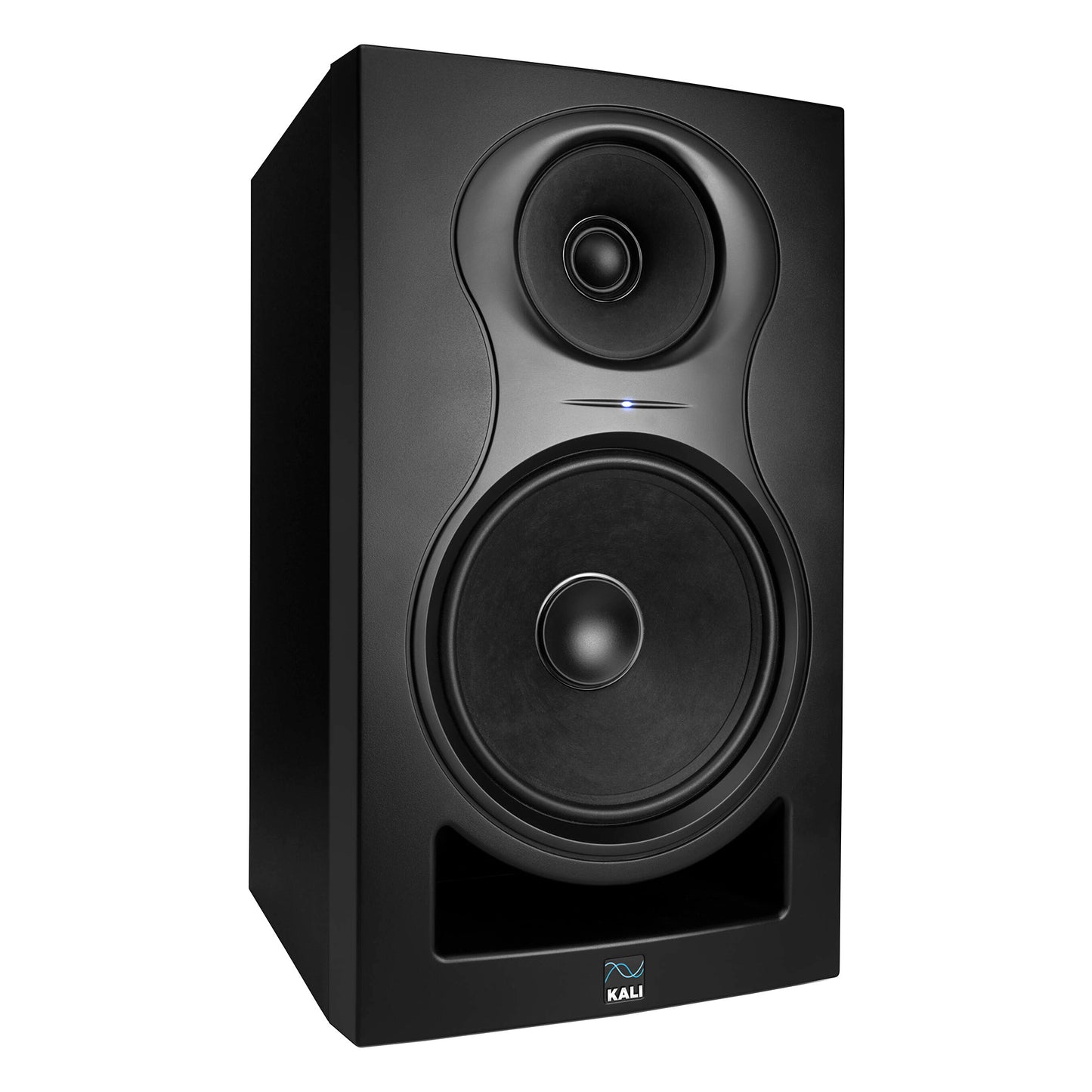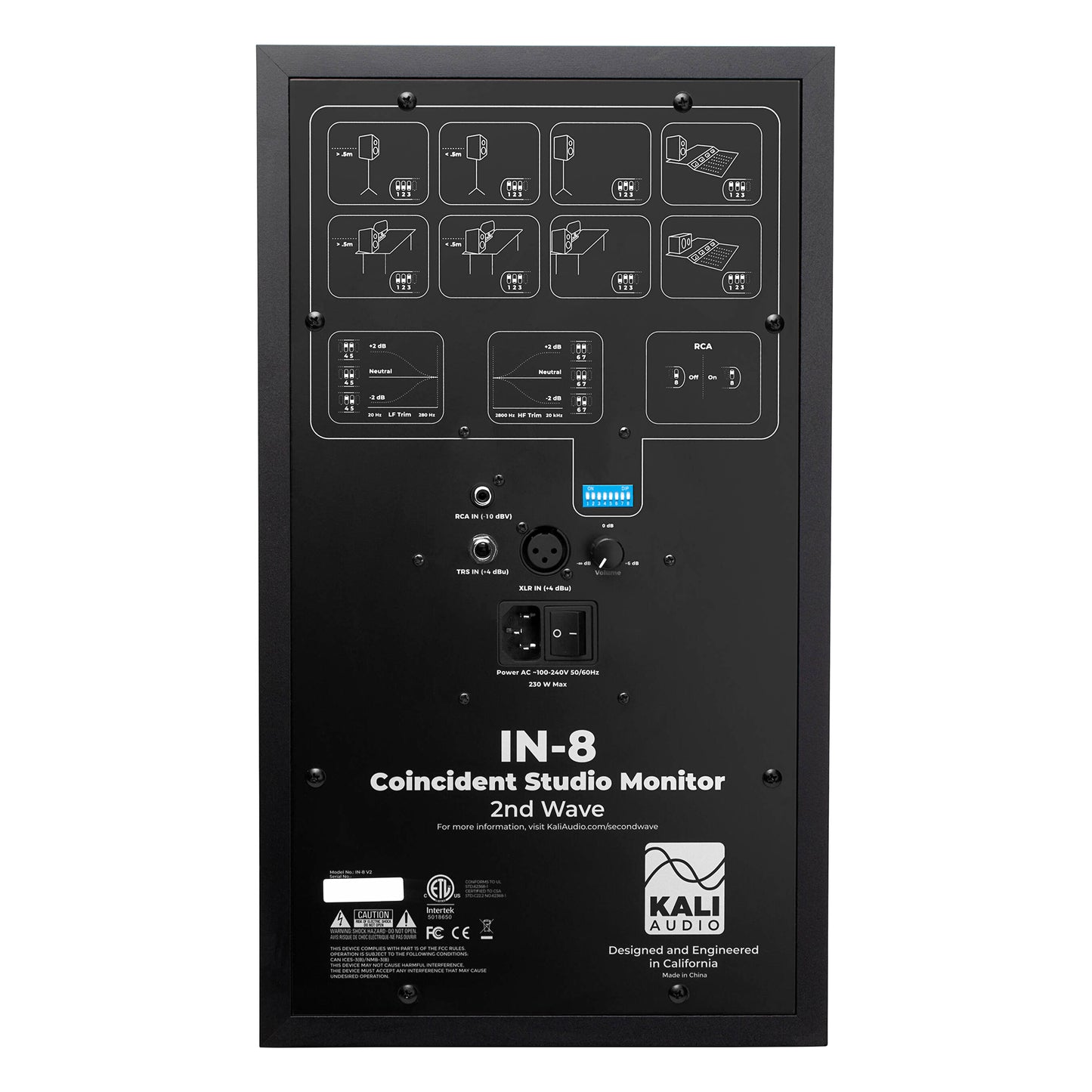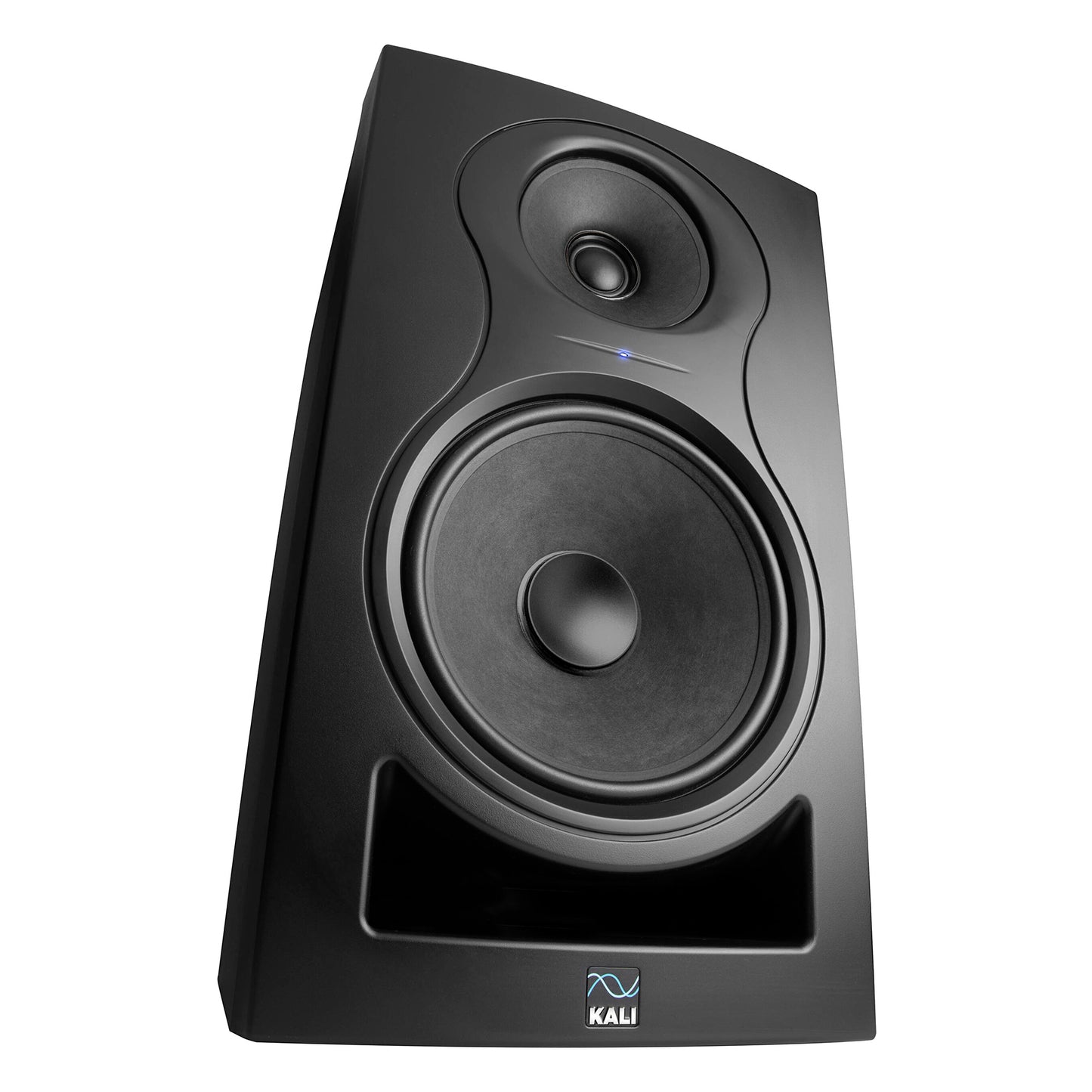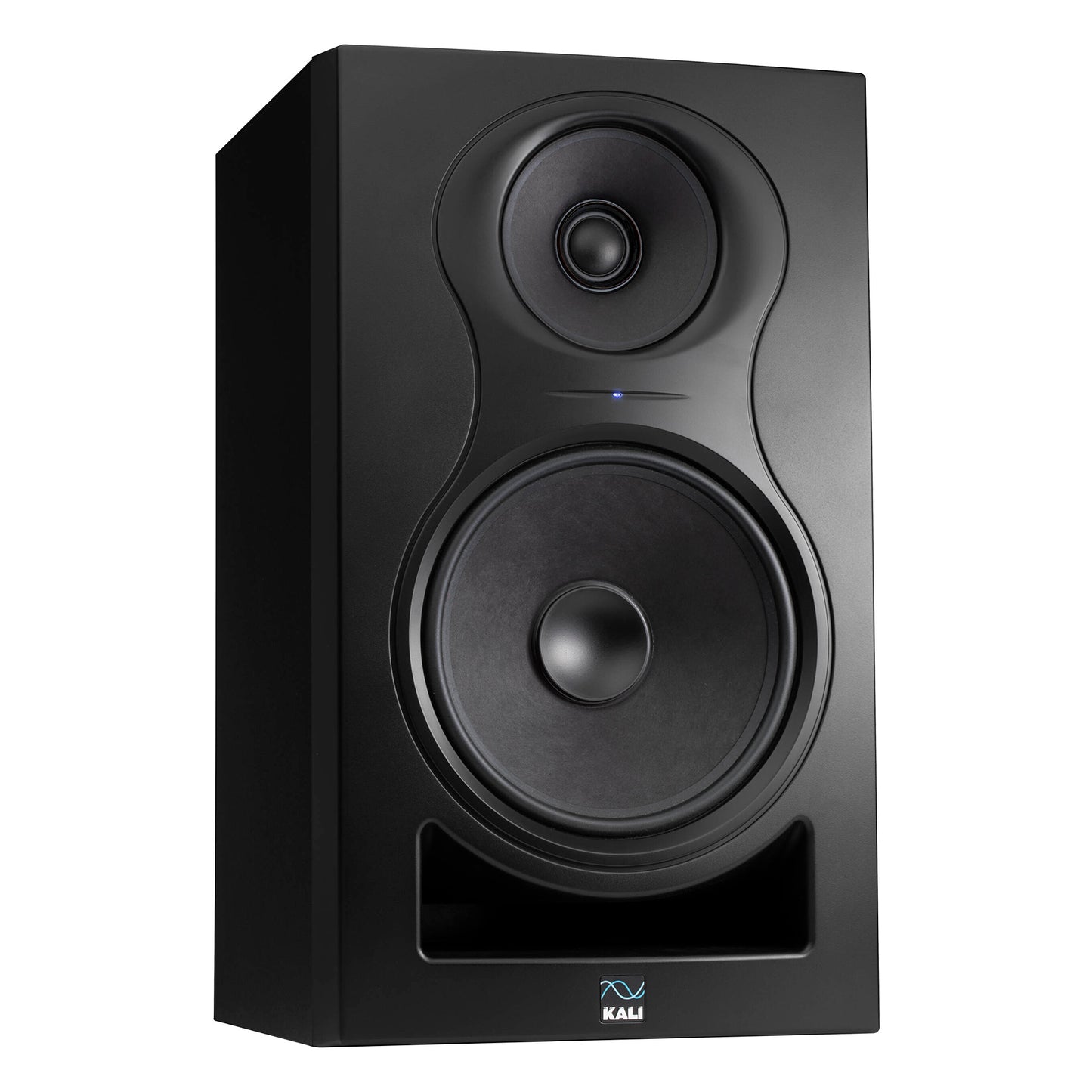KaliAudio
Kali Audio IN-8 2nd Wave
Kali Audio IN-8 2nd Wave
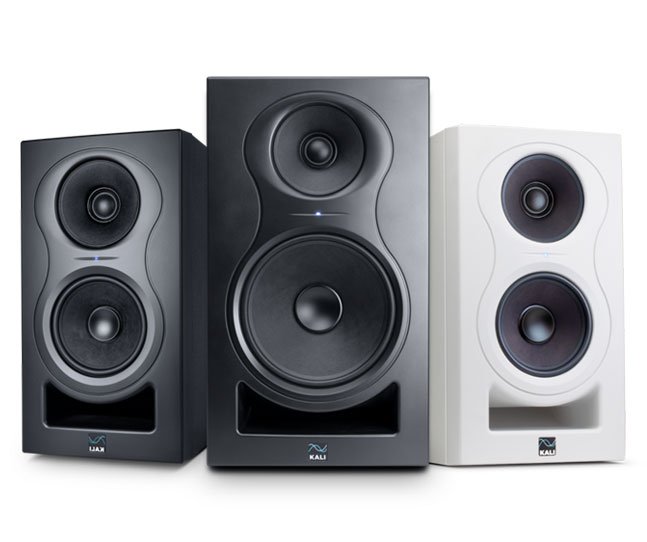
Independence Project
Kali Audio IN-8 2nd Wave is one of the most innovative studio monitors ever created. Combining the natural advantages of a 3-way design with hyper-realistic coaxial mid- and high-band imaging, it offers greater transparency, lower distortion and a soundstage that must be heard to be believed.
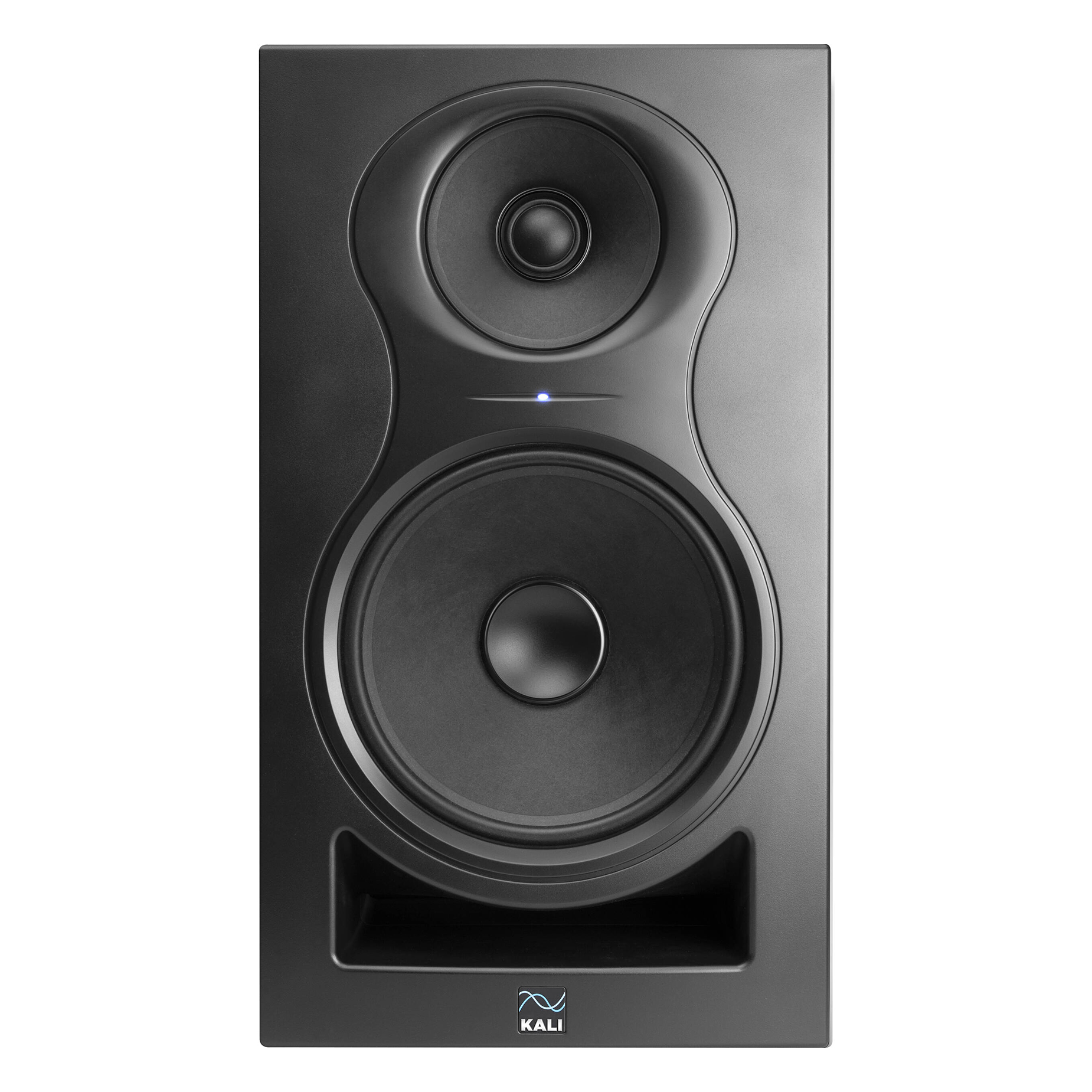
Performance
Unrivaled power and detail.
The IN series monitors are unlike anything you've heard before. The three-way design allows both the woofer and tweeter to do less work, resulting in better headroom and lower distortion across the frequency spectrum.
At the same time, the coaxial architecture of the midrange and tweeter results in hyper-realistic imaging. This means you'll be able to hear subtle details in your mix with pinpoint precision.
The design of the system allows the IN series monitors to function as acoustic point sources. They have all the advantages of both traditional 3-way systems and traditional coaxial loudspeakers, without any of the disadvantages traditionally associated with either.
All this makes the IN-5 and IN-8 v2 extremely accurate and easy to mix. You'll be able to work faster and with more confidence, and your mixes will translate to other systems with less work.
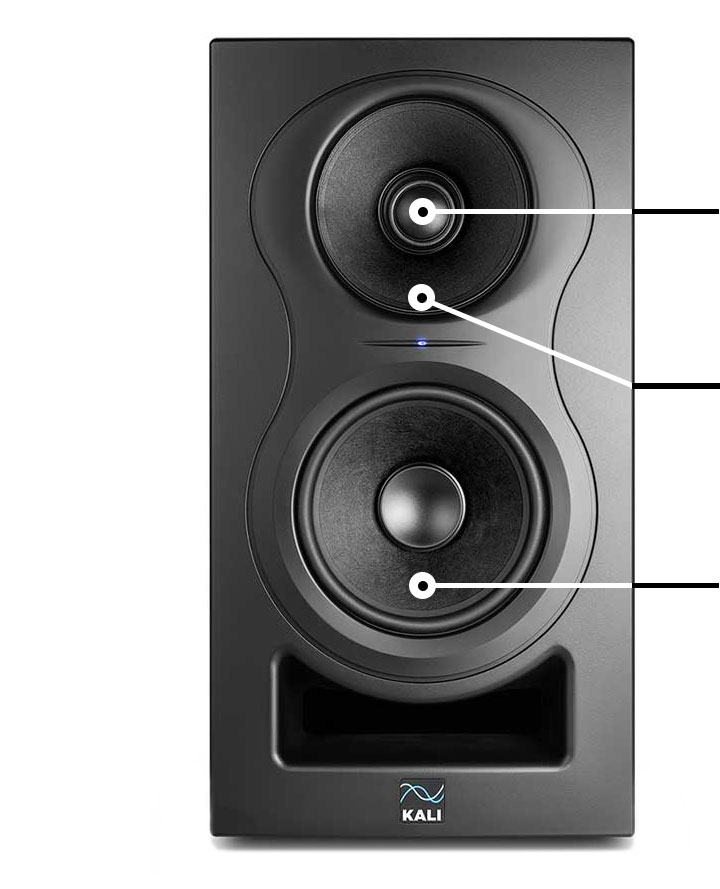
Features of Kali Audio IN-8
- Soft dome tweeter – smooth, undistorted highs.
- Midrange driver with optimized profile - clear midrange and excellent directivity right up to the top of the frequency response.
- Powerful woofer - clear, expressive bass that does not distort the mid and high tones.
Accuracy
The most important aspect of a studio monitor is its accuracy. A good studio monitor should faithfully present the material being played, allowing you to make critical decisions that will certainly translate into all the systems on which your work will ultimately be played.
Not only do the IN Series monitors achieve this, but their consistent architecture allows them to be more accurate than other speakers in a wider range of demanding acoustic environments.
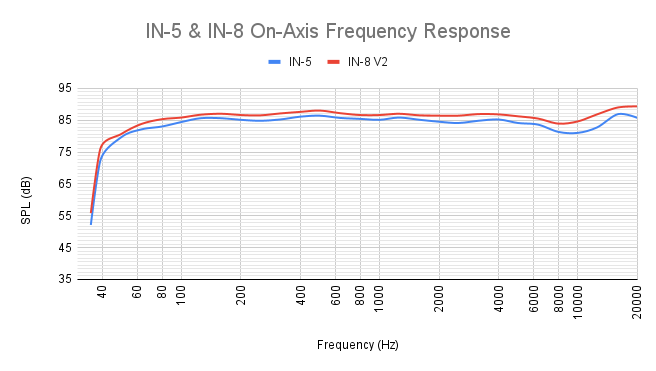
Imaging
We know. We keep talking about the "hyperrealistic" imaging of the IN-8. what does it mean?
When you listen to a stereo speaker system, you hear information about where the instruments and musicians were placed when the material was recorded. Even with purely digital material, producers can manipulate the physical placement of elements in the mix, and you'll hear them on the stereo recording.
Not only does this allow producers to create interesting spatial effects, but it means you can work faster and with more confidence. Accurate soundstage allows you to "see" every element of the mix in front of you, so you can hear exactly what's happening when you make changes.
2-way systems with good waveguides, such as the Kali LP-6 and LP-8 , do a great job of conveying this spatial information. Because the tweeter and woofer of these monitors (and most studio monitors!) are separated, this information is lost in the space directly above and below the speaker. This means that you don't hear the full stereo image in your listening position.
IN-8 solves this problem. The tweeter and midrange share a common acoustic center, and the woofer is crossed at 330 Hz, so the distance between the woofer and midrange is much less than a quarter of a wavelength at the point of intersection. This means that the IN-8 is acoustically a point source. As such, it has the same excellent directivity that the LP-6 and LP-8 have on the sides in a full 360-degree range around the speaker. You hear all the spatial information at your listening position, so the soundstage you hear will have every detail that is present in the mix.
Clarity
The total harmonic distortion of the Kali Audio IN-8 v2 is less than 1.4%, which is exceptional. This is the result of reducing the load on both the woofer and tweeter, making both components do less work. The woofer is crossed at 330 Hz, which is 2.5 octaves lower than in the LP-8.
The tweeter is crossed at 3000 Hz, almost an octave higher than the LP-8. The space between them is occupied by the hero of the IN-8 v2 system: a 4-inch, profile-optimized midrange driver. This pickup has a lot of work to do. In addition to reproducing the midrange, it also acts as a waveguide for the tweeter. This means that the shape had to be precisely designed to ensure the perfect dispersion typical of a tweeter.
This also means that the diameter must remain stationary. In many other coaxial or coaxial systems, the high excursion of the larger driver causes intermodulation distortion and reduces the precision of the system. The diameter of the IN-8 v2 is limited to less than 1 millimeter of peak excursion, which makes it acoustically still while still providing a mid-range to keep up with the powerful woofer and tweeter.

UPDATE: 2nd Wave
Kali Audio 2nd Wave is the second generation of studio monitors that centers around a new amplifier platform, updated drivers and improved construction processes. You can also tell the difference between 1st Wave products and 2nd Wave products by looking at the drivers. 1st Wave monitors have a dark black, glossy finish, while 2nd Wave monitors have a lighter, matte finish.
Reduction of amplifier self-noise by 12 dB.
2nd Wave IN-Series monitors are silent when not in use. The only noise you will hear is what is coming from your mix.
Naturally finished speaker diaphragms.
Less material on the diaphragm increases transducer efficiency.
Improved housing design.
For better aesthetic durability.
More powerful DSP processor.
For more precise tuning.
New border equalizer tuning.
To take advantage of the fact that IN series monitors can be placed both horizontally and vertically.
Input sensitivity reduced by 3dB.
To obtain higher output power from a given input signal.
Kali Audio IN-8 2nd Wave specifications
- Active: Yes
- Amplifier class: D
- DSP functions: Speaker tuning, limiter, crossover, border equalizer settings
- Power Configuration: Tri-Amp
- LF Power: 60W
- MF Power: 40W
- HF Power: 40W
- Total power: 140 W
- LF transducer: 8″, coated paper
- MF transducer: 4″ optimized profile, coated paper
- HF transducer: 1" textile dome
- Frequency response (-10 dB): 37 Hz – 25 kHz
- Frequency range (±3 dB): 45 Hz – 21 kHz
- LF to MF crossover: 280 Hz
- MF to HF crossover: 2800 Hz
- Listening distance: 0.5 – 3.5 m
- Max SPL: 117 dB
Share a link to the product
